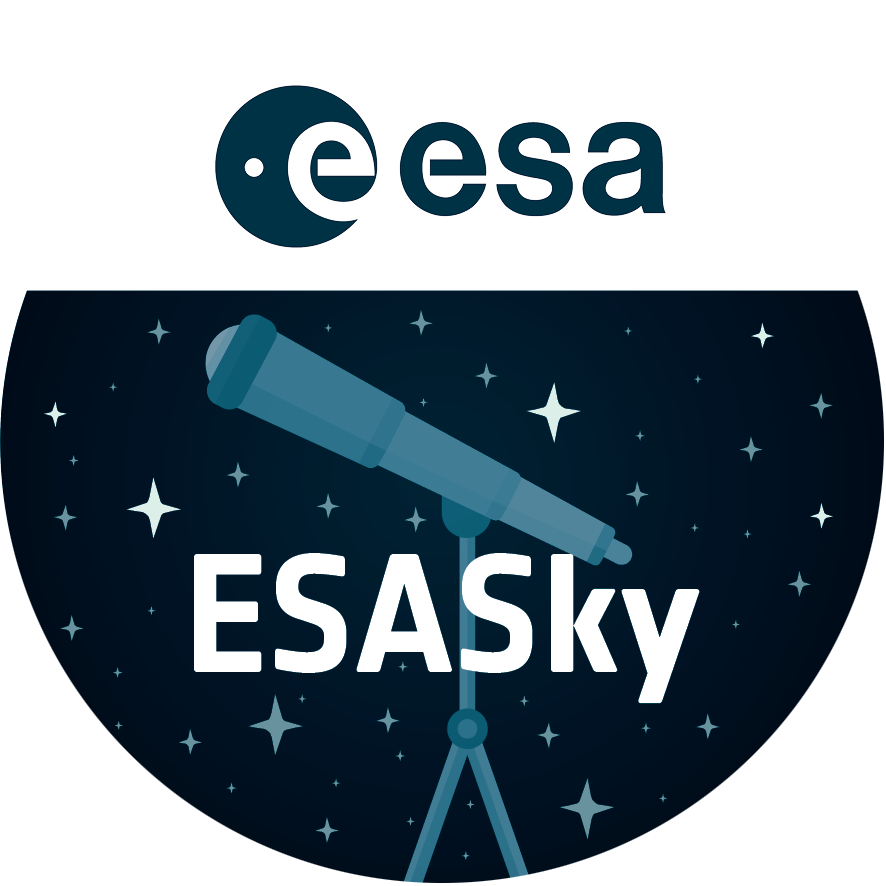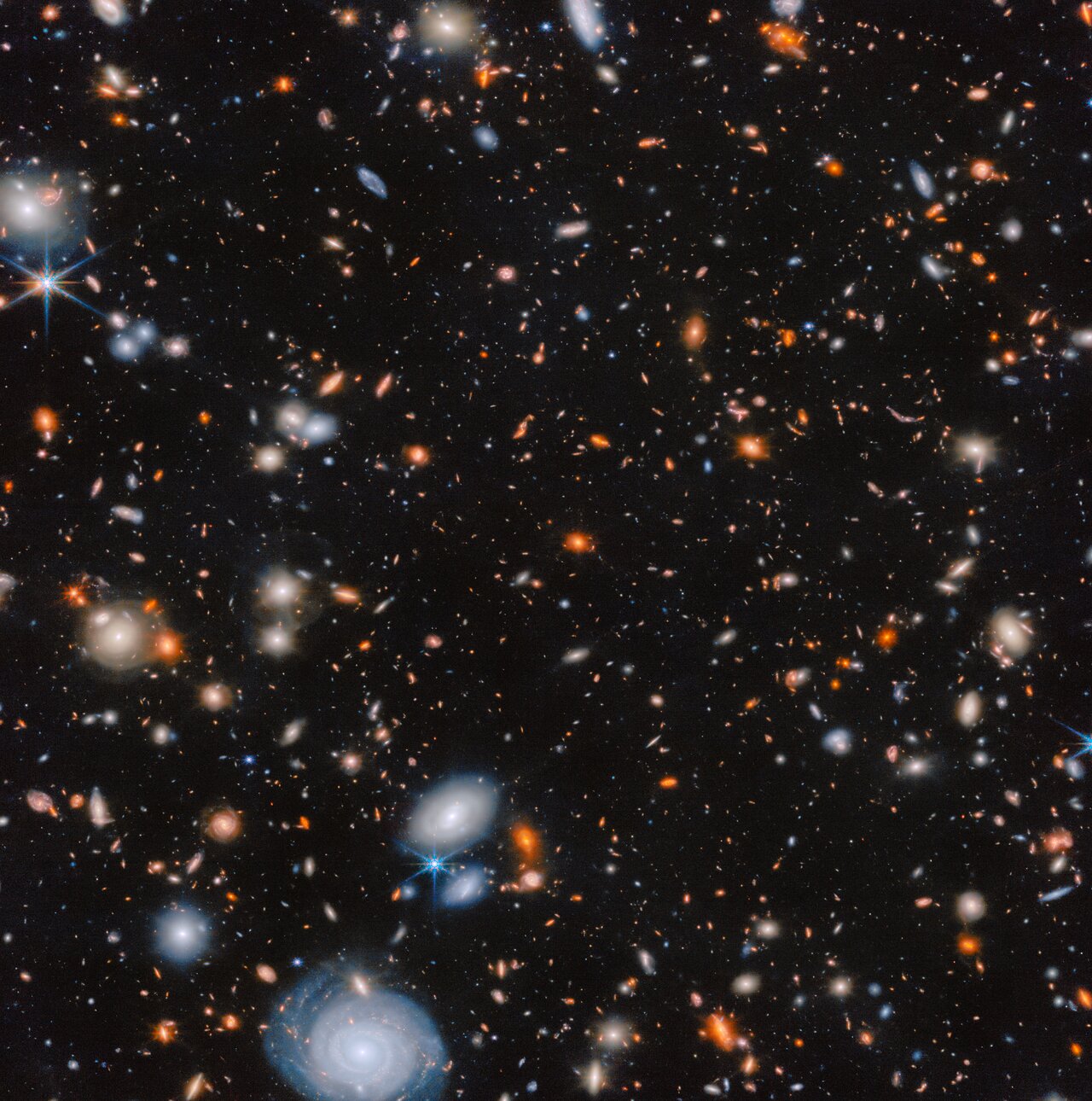Coordinates
| Position (RA): | 11 49 29.43 |
|---|---|
| Position (Dec): | 22° 21' 26.65" |
| Field of view: | 2.40 x 2.42 arcminutes |
| Orientation: | North is 121.8° right of vertical |
Colours & filters
| Band | Wavelength | Telescope |
|---|---|---|
| Optical | 900 nm | James Webb Space Telescope NIRCam |
| Infrared | 1.15 μm | James Webb Space Telescope NIRCam |
| Infrared | 1.5 μm | James Webb Space Telescope NIRCam |
| Infrared | 2.0 μm | James Webb Space Telescope NIRCam |
| Infrared | 3.56 μm | James Webb Space Telescope NIRCam |
| Infrared | 4.1 μm | James Webb Space Telescope NIRCam |
| Infrared | 4.44 μm | James Webb Space Telescope NIRCam |
MACS J1149.5+2223
This image shows a portion of the galaxy cluster MACS J1149.5+2223, as seen by Webb’s Near-Infrared Camera (NIRCam). With Webb’s excellent sensitivity to infrared light and the hours of exposure time combined in this image, distant galaxies (red colours) are brought out of the darkness. Other galaxies glow strongly from the abundance of light they radiate.
These observations come from the CANUCS survey (#1208, PI: C. J. Willott). The survey employed Webb’s advanced instruments, including NIRCam, NIRISS and NIRSpec, to capture detailed images and spectra of massive galaxy clusters in infrared light. Astronomers could then study low-mass galaxies in these early clusters at early stages of evolution. Because of how Webb’s instruments work, for each cluster the survey targeted both the cluster’s centre, where the brightest and largest galaxies are gathered, and a “parallel field” of a neighbouring area within the cluster. This image features one of these parallel fields.
Researchers studying the data from the CANUCS survey uncovered a distant galaxy, named CANUCS-LRD-z8.6, in this parallel field. The galaxy is extremely distant (seen only 570 million years after the Big Bang) and the team’s research revealed that it hosts a supermassive black hole that is unusually large for such an early stage in the Universe. This result challenges existing theories about the formation of galaxies and black holes in the early Universe.
[Image description: An image of many glowing galaxies in deep space, in various shapes and colours, on a black background. There are some large, blue spiral galaxies, some large and pale white elliptical galaxies, and many orange and red, medium-sized galaxies. Even smaller galaxies, down to tiny faint spots, appear in all these colours.]
Credit:ESA/Webb, NASA & CSA, G. Rihtaršič (University of Ljubljana, FMF), R. Tripodi (University of Ljubljana, FMF)
About the Image
| Id: | weic2522b | |
|---|---|---|
| Type: | Observation | |
| Release date: | 19 November 2025, 12:00 | |
| Related releases: | weic2522 | |
| Size: | 3597 x 3624 px | |




